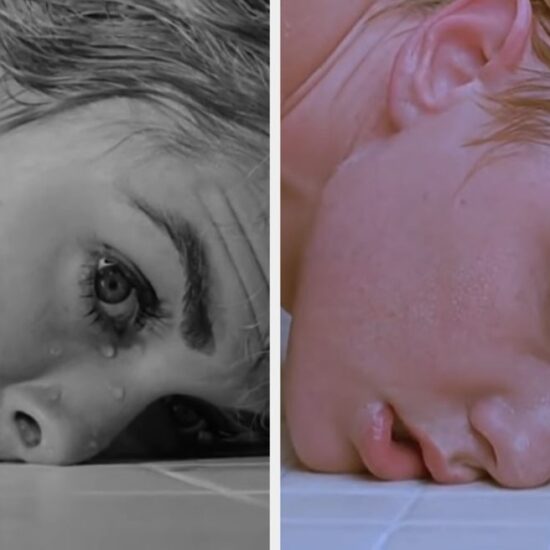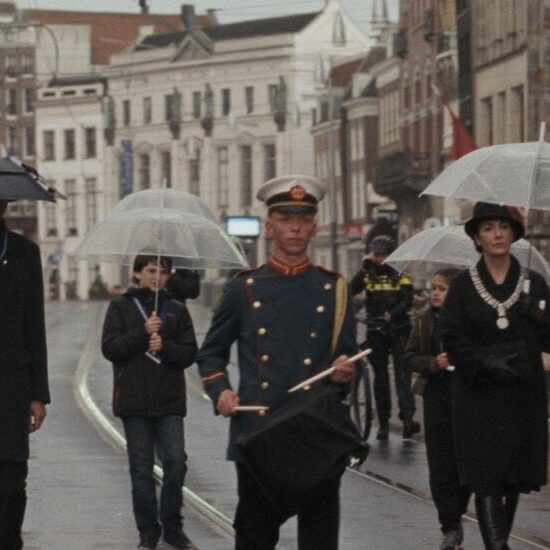
When the polarizing subject of natural wine arises, the discussion generally spirals to the stereotypes: flawed and funky wines, hippie producers and the debate over definitions. But a new documentary film, “Living Wine,” hopes to change that trite discussion.
The film, which opens in selected theaters July 15, focuses on a small group of natural wine producers in California. It examines, with far more nuance than is typical, the myriad reasons they choose to work in natural wine, along with the many rationales for consumers to drink it.
In this context, natural wine is presented neither as a trend nor a generational emblem. Involvement is a conscious choice. Though their reasons may overlap, each of the producers in the film has a different point of emphasis.
Gideon Beinstock and Saron Rice of Clos Saron in the Sierra Foothills make wine without additives because they believe that method makes the best wines and offers the best expression of their vineyard.
“The fact that we don’t add anything is not because it’s natural,” Mr. Beinstock said. “It’s because, why would I add anything? It will not improve the wine.”
Darek Trowbridge of Old World Winery in the Russian River Valley believes in the traditional methods embodied by his ancestors, who planted a vineyard in the area almost 100 years ago, before chemical farming became the norm. He wants to express the distinctive terroirs of his vineyards, but he sees himself as a custodian of nature, too, a role that he holds sacred.
“I try to work to do good on my farm for the land, for the ecosystem,” he said. “Where I reside spiritually is where I want to reside as a farmer and not separate the two.”
For Megan Bell of Margins Wines, who shares a production facility outside of Santa Cruz with James Jelks of Florèz Wines, the reasons are more political, born of her demeaning experiences as a young woman in a male-dominated winery in Napa Valley.
“I hated my job,” she said. “I loved what I physically did, but the culture and the way that I was treated, I dreaded going to work every day. Nobody wants to be at work when their abilities are doubted constantly.”
She is a minimalist, trying to work efficiently rather than trying to make art, and has chosen to work primarily with grapes and areas that she believes are ignored by the corporate wine world, which she might not have left it if she hadn’t felt driven out.
“If I worked in a nicer industry, I never would have started my own company,” she said.
The reasons to make natural wines are primarily cultural for Dani Rozman of La Onda, in the Sierra Foothills. He wants to wean Americans from the notion that the American wine industry traces directly to modern Europe. Instead, he wants to focus on North and South America, and their centuries of shared grape-growing and winemaking history that began when Spanish missionaries planted the listán prieto, or mission, grape in the Americas.
Having worked with farmers in Chile gave him insight into alternatives to mainstream winemaking. “All the equipment is developed to make winemaking easier, but that doesn’t make it better,” he said.
Following their personal muses, these producers have all ended up outside conventional winemaking, and have gravitated to styles of farming without chemical fertilizers and sprays, while employing traditional, preindustrial production methods.
Looming over all is the climate crisis, which in California has caused intense heat waves, drought and repeated threats of deadly, destructive fires. Over the course of filming, each of these producers was directly affected by the fires.
While these winemakers do not say they work specifically to combat climate change, the film addresses the vast harm that conventional agriculture has exacted on ecosystems and the climate. It also holds out hope that, if the world could step away from chemical farming and focus on building soil health and other regenerative methods, agriculture could be an important part of the solution.
Lori Miller, the producer and director of “Living Wine,” said she was drawn to these subjects because they work on the fringe.
“I love telling stories about people outside the normal corporate world, people who are not playing the game but are inspired from within,” she said in a phone interview. “This story fell within the mold.”
Though Ms. Miller, whose producer credits include “They Came to Play” and “Shakespeare High,” counts herself as a food and wine lover, she knew little about natural wine before beginning this project.
Her brother, Ben Miller, and his family had moved into a new home outside of Santa Rosa, which came with a vineyard. They were dismayed to learn that the vineyard had been regularly sprayed with the herbicide glyphosate, which could have seeped into the well that supplied their household water. He was introduced to Mr. Trowbridge, who began the process of weaning the vineyard from chemical treatments.
“That was the impetus for learning more about this,” Ms. Miller said. “I started looking into the wines I was buying, and I had no idea.”
She said she tries to buy and cook only organic foods, and was shocked to learn that most of the wines she was drinking bore no relation to the foods she was buying.
“I had always assumed wine was a natural beverage,” she said. “But if you go to the grocery store and pull something off the shelf, the likelihood is it was farmed with chemical inputs or farmed in a way that was terrible for the environment.”
Ms. Miller imagines that those who watch the film might be very much like her, hyperconscious about where their food comes from but giving little thought to the wine. The first words in “Living Wine” come from Mr. Trowbridge:
“The natural wine movement is about 20 years behind the organic food movement,” he said. “You can’t see the processing, but typically wine is a manufactured, machine-driven product. That means adjuncts to make it work in a timely manner.
“People just don’t understand that,” he continued. “I didn’t know that until I got a master’s degree in winemaking.”
With the help of two proponents of regenerative agriculture, Elizabeth Candelario and Dr. Timothy LaSalle, the film traces the rise of chemical agriculture to the repurposing of closed munitions factories after World War II. Nitrogen that went into bombs was instead used to make fertilizer, while nerve gas became an ingredient in pesticides.
With the support of the government and Big Agriculture, students and farmers were taught an industrialized form of agriculture to increase production. The industrial methods resulted in far more specialized farming rather than in the more natural, complex ecosystems of preindustrial farming, and built a dependency on Big Ag corporations.
“Nature only works in whole systems,” Dr. LaSalle said. “She can’t work separated out. When you bring something in, it changes and causes unexpected consequences.”
The film never loses the thread between agricultural and wine, which in many people’s minds is simply a product on a supermarket shelf.
“Every form of agriculture is detrimental to the environment, on any scale, even a garden, but we try to minimize the footprint,” Mr. Beinstock said.
Their winemaking facilities are rustic, far from the wealthy tourist outposts in the popular imagination. They are designed for work, and the labor is difficult. The motivation is more personal expression than profit, yet choosing to work outside the mainstream is stressful in its own ways.
“I’m at a spot still where I’ve been on food stamps for a year and I still have other jobs,” said Ms. Bell, of Margins Wines. “Because I’m putting all my money into my business.”
She and Mr. Jelks, of Florèz Wines, outfitted their utilitarian facility with secondhand equipment and castoffs. It’s not ideal, and not easy, but it’s liberating.
“We just stay scrappy and resilient, and we never stop,” Mr. Jelks said.
As for natural wines themselves, the film acknowledges that consumers may require time to adjust to them because of expectations that arise from years of drinking commonplace examples, just as a farm-raised tomato might prove shocking to one accustomed to glossy supermarket tomatoes.
At a tasting contrasting conventional and natural chardonnays, one consumer described the conventional bottle as “all the things you’re programmed to expect in a chardonnay.” The natural example was different, she said, but was “probably a more true expression of what the actual grape is.”
Like a good natural wine, the film is not without some minor blemishes. It’s too black-and-white in its portrait of conventional wine, for one, which offers far more of a spectrum of approaches.
But the idealism, selflessness and commitment of the growers and producers is inspiring. Though, as the film states, natural wine accounts for less than one percent of the wine produced in California, they have chosen to act on principle rather than resign themselves in despair.
What the film offers in the end is not a formula for the good life, a cliché of California wine country, but a way of living well and reflectively, as Tahnee Shields, a harvest intern at Clos Saron, says about Mr. Beinstock:
“His philosophy is, thinking about what a life can look like when you’re in constant cultivation and paying constant attention to something that you’re growing.”
Climate chaos can be overwhelming, but Ms. Miller hopes that film will be motivational.
“You can make a difference even if you’re only farming a few acres, or composting in your yard or have a small colony of bees,” she said. “I hope showcasing people who aren’t giving up will be inspiring.”













